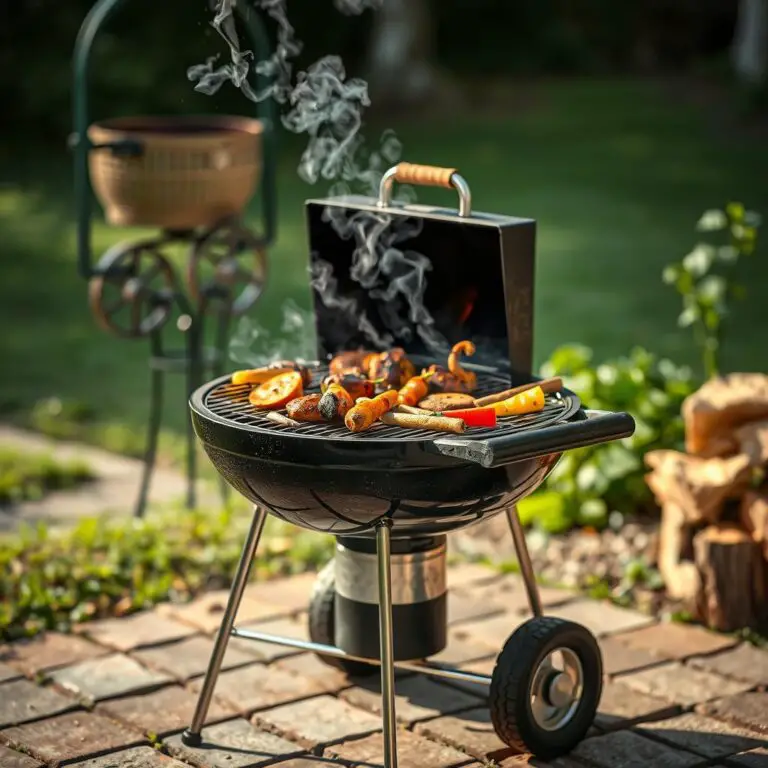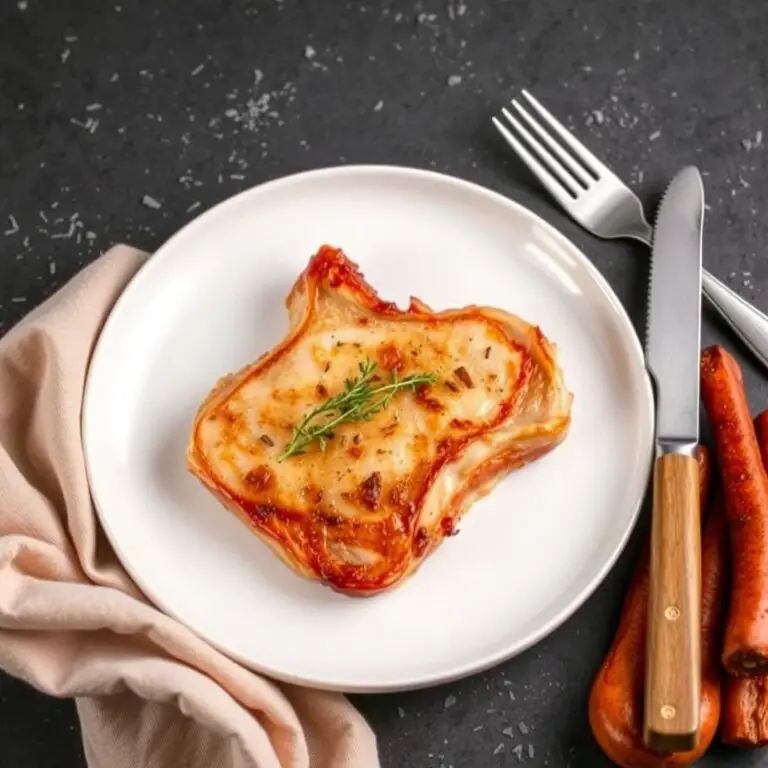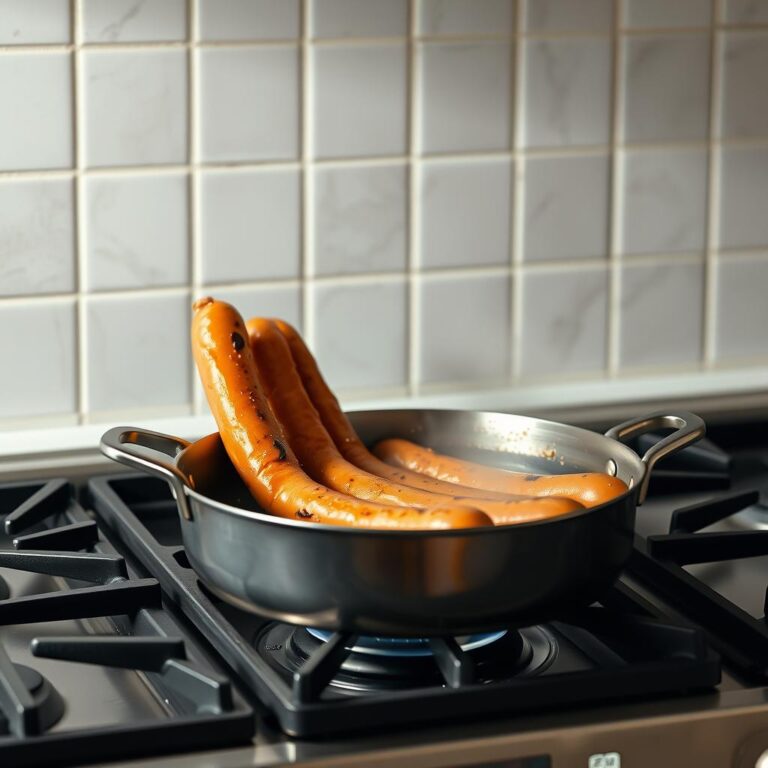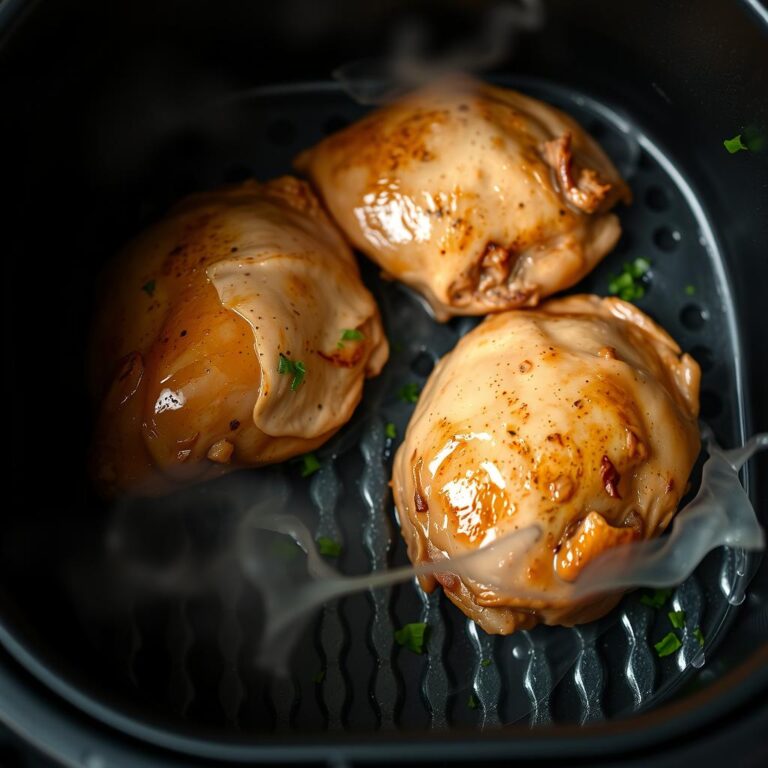Can I cook a ham frozen? That's the question on your mind, and I'm here to give you the straight answer about cooking a frozen ham.
Frozen Ham: The Big Question
So, you've got a frozen ham, and dinner's in a few hours, or maybe you completely forgot to thaw it.
It happens to the best of us.
Can you actually cook a frozen ham?
The short answer is yes, you absolutely can cook a frozen ham.
Cooking a Frozen Ham: What You Need to Know
Now, before you toss that frozen ham into the oven, there are a few things you need to keep in mind regarding safely cooking a frozen ham.
It’s not quite the same as cooking a thawed ham, and you need to adjust your cooking time and expect some changes in texture.
Here’s the deal:
- Time is of the essence, but patience is key: Cooking a frozen ham will take significantly longer than cooking a thawed one. Plan for about 50% more cooking time.
- Temperature matters: Make sure your oven temperature is accurate. Use an oven thermometer to be sure.
- Safety first: Use a meat thermometer to ensure the internal temperature reaches a safe level. This is crucial for killing bacteria and ensuring food safety when cooking frozen meat.
- Texture change: Don't expect a perfectly tender, juicy ham like you would get from a fully thawed one. The texture might be a bit different, possibly a little drier because the frozen ham will lose moisture.
Is It Safe to Cook a Ham From Frozen?
Yep, cooking a frozen ham is safe, as long as you follow the right steps.
The USDA says it's perfectly fine to cook meat from frozen, but again, it takes longer.
The important thing is that the internal temperature of the ham reaches 145°F (63°C) to ensure any harmful bacteria are killed.
Preparing Your Frozen Ham for Cooking
Okay, let's get practical.
You've decided to cook your frozen ham.
Here’s how to prepare it:
- Rinse the ham: Give the frozen ham a quick rinse under cold water to remove any ice crystals or freezer burn.
- Remove packaging: Take off all the packaging, including any plastic wrap or the ham bone guard.
- Score the ham (optional): If you want, you can score the top of the ham in a diamond pattern. This helps with heat penetration and allows flavors to soak in better.
- Choose your cooking method: Oven roasting is the most common, but you can also use a slow cooker or pressure cooker.
- Consider adding liquid: Adding some liquid, like water, broth, or even apple juice, to the bottom of the pan can help keep the ham moist during cooking.
Cooking Times for a Frozen Ham
Alright, let’s talk about the actual cooking time.
This is where things get a bit tricky since the exact time will depend on the size and type of your ham.
But here's a general guideline for cooking a frozen ham:
- Oven Roasting: Plan on about 50% more cooking time than you would for a thawed ham. Typically, this means around 20-25 minutes per pound at 325°F (160°C). So, a 10-pound frozen ham might take around 3-4 hours.
- Slow Cooker: If you're using a slow cooker, it could take 6-8 hours on low. Make sure there’s enough liquid in the pot to prevent it from drying out.
- Pressure Cooker: A pressure cooker can significantly cut down the cooking time. A general rule is about 6-8 minutes per pound, followed by a natural pressure release.
How to Know When Your Frozen Ham Is Done
The best way to tell if your frozen ham is done is to use a meat thermometer.
Insert the thermometer into the thickest part of the ham, avoiding the bone.
- Target Temperature: The internal temperature should reach 145°F (63°C).
Once it hits that temperature, you know it's safe to eat.
Keep in mind that the ham will continue to cook slightly after you take it out of the oven, so don’t overcook it.
Tips for Keeping Your Frozen Ham Moist
Cooking a frozen ham can sometimes result in a drier product.
Here are a few tips to help keep it moist:
- Use a roasting bag: Cooking the ham in a roasting bag can trap moisture and prevent it from drying out.
- Add liquid to the pan: As mentioned earlier, adding liquid to the bottom of the pan creates steam, which helps keep the ham moist.
- Baste frequently: Basting the ham with its own juices or a flavorful glaze every 30-45 minutes can add moisture and flavor.
- Cover with foil: If you notice the top of the ham is browning too quickly, cover it loosely with foil to prevent it from drying out.
Glazing Your Frozen Ham
Glazing your ham can add a delicious flavor and help keep it moist.
Here’s how to do it:
- Wait until the last 30-45 minutes: Apply the glaze during the last 30-45 minutes of cooking time. This prevents the glaze from burning.
- Choose your glaze: There are tons of glaze options, from honey mustard to brown sugar and maple syrup. Pick one that you like.
- Apply the glaze: Brush the glaze evenly over the surface of the ham.
- Baste and repeat: Baste the ham with the glaze every 10-15 minutes for the remaining cooking time.
Thawing a Ham vs. Cooking It Frozen: Which Is Better?
While you can cook a ham from frozen, thawing it first is generally the preferred method.
Thawing allows for more even cooking and a better texture.
If you have the time, here’s how to thaw a ham safely:
- In the refrigerator: This is the safest method. Allow about 4-6 hours per pound. A 10-pound ham could take 2-3 days to thaw completely in the fridge.
- In cold water: If you need to thaw it faster, you can submerge the ham in cold water. Change the water every 30 minutes to keep it cold. Plan on about 30 minutes per pound.
- Microwave: Microwaving is the fastest method, but it’s also the trickiest. Follow your microwave's instructions for thawing and be sure to cook the ham immediately after thawing.
Final Thoughts on Cooking a Frozen Ham
So, can I cook a ham frozen? Absolutely, but it requires some adjustments to ensure it's safely cooked and still tastes great, remember to adjust cooking times.
Can I cook a ham frozen? That's the question on your mind, and I'm here to give you the straight answer about cooking a frozen ham.
Frozen Ham: The Big Question
So, you've got a frozen ham, and dinner's in a few hours, or maybe you completely forgot to thaw it.
It happens to the best of us.
Can you actually cook a frozen ham?
The short answer is yes, you absolutely can cook a frozen ham.
Cooking a Frozen Ham: What You Need to Know
Now, before you toss that frozen ham into the oven, there are a few things you need to keep in mind regarding safely cooking a frozen ham.
It’s not quite the same as cooking a thawed ham, and you need to adjust your cooking time and expect some changes in texture.
Here’s the deal:
- Time is of the essence, but patience is key: Cooking a frozen ham will take significantly longer than cooking a thawed one. Plan for about 50% more cooking time.
- Temperature matters: Make sure your oven temperature is accurate. Use an oven thermometer to be sure.
- Safety first: Use a meat thermometer to ensure the internal temperature reaches a safe level. This is crucial for killing bacteria and ensuring food safety when cooking frozen meat.
- Texture change: Don't expect a perfectly tender, juicy ham like you would get from a fully thawed one. The texture might be a bit different, possibly a little drier because the frozen ham will lose moisture.
Is It Safe to Cook a Ham From Frozen?
Yep, cooking a frozen ham is safe, as long as you follow the right steps.
The USDA says it's perfectly fine to cook meat from frozen, but again, it takes longer.
The important thing is that the internal temperature of the ham reaches 145°F (63°C) to ensure any harmful bacteria are killed.
Preparing Your Frozen Ham for Cooking
Okay, let's get practical.
You've decided to cook your frozen ham.
Here’s how to prepare it:
- Rinse the ham: Give the frozen ham a quick rinse under cold water to remove any ice crystals or freezer burn.
- Remove packaging: Take off all the packaging, including any plastic wrap or the ham bone guard.
- Score the ham (optional): If you want, you can score the top of the ham in a diamond pattern. This helps with heat penetration and allows flavors to soak in better.
- Choose your cooking method: Oven roasting is the most common, but you can also use a slow cooker or pressure cooker.
- Consider adding liquid: Adding some liquid, like water, broth, or even apple juice, to the bottom of the pan can help keep the ham moist during cooking.
Cooking Times for a Frozen Ham
Alright, let’s talk about the actual cooking time.
This is where things get a bit tricky since the exact time will depend on the size and type of your ham.
But here's a general guideline for cooking a frozen ham:
- Oven Roasting: Plan on about 50% more cooking time than you would for a thawed ham. Typically, this means around 20-25 minutes per pound at 325°F (160°C). So, a 10-pound frozen ham might take around 3-4 hours.
- Slow Cooker: If you're using a slow cooker, it could take 6-8 hours on low. Make sure there’s enough liquid in the pot to prevent it from drying out.
- Pressure Cooker: A pressure cooker can significantly cut down the cooking time. A general rule is about 6-8 minutes per pound, followed by a natural pressure release.
How to Know When Your Frozen Ham Is Done
The best way to tell if your frozen ham is done is to use a meat thermometer.
Insert the thermometer into the thickest part of the ham, avoiding the bone.
- Target Temperature: The internal temperature should reach 145°F (63°C).
Once it hits that temperature, you know it's safe to eat.
Keep in mind that the ham will continue to cook slightly after you take it out of the oven, so don’t overcook it.
Tips for Keeping Your Frozen Ham Moist
Cooking a frozen ham can sometimes result in a drier product.
Here are a few tips to help keep it moist:
- Use a roasting bag: Cooking the ham in a roasting bag can trap moisture and prevent it from drying out.
- Add liquid to the pan: As mentioned earlier, adding liquid to the bottom of the pan creates steam, which helps keep the ham moist.
- Baste frequently: Basting the ham with its own juices or a flavorful glaze every 30-45 minutes can add moisture and flavor.
- Cover with foil: If you notice the top of the ham is browning too quickly, cover it loosely with foil to prevent it from drying out.
Glazing Your Frozen Ham
Glazing your ham can add a delicious flavor and help keep it moist.
Here’s how to do it:
- Wait until the last 30-45 minutes: Apply the glaze during the last 30-45 minutes of cooking time. This prevents the glaze from burning.
- Choose your glaze: There are tons of glaze options, from honey mustard to brown sugar and maple syrup. Pick one that you like.
- Apply the glaze: Brush the glaze evenly over the surface of the ham.
- Baste and repeat: Baste the ham with the glaze every 10-15 minutes for the remaining cooking time.
Thawing a Ham vs. Cooking It Frozen: Which Is Better?
While you can cook a ham from frozen, thawing it first is generally the preferred method.
Thawing allows for more even cooking and a better texture.
If you have the time, here’s how to thaw a ham safely:
- In the refrigerator: This is the safest method. Allow about 4-6 hours per pound. A 10-pound ham could take 2-3 days to thaw completely in the fridge.
- In cold water: If you need to thaw it faster, you can submerge the ham in cold water. Change the water every 30 minutes to keep it cold. Plan on about 30 minutes per pound.
- Microwave: Microwaving is the fastest method, but it’s also the trickiest. Follow your microwave's instructions for thawing and be sure to cook the ham immediately after thawing.
Final Thoughts on Cooking a Frozen Ham
So, can I cook a ham frozen? Absolutely, but it requires some adjustments to ensure it's safely cooked and still tastes great, remember to adjust cooking times.
Addressing Common Concerns: Cooking a Ham from a Frozen State
You're probably still wondering about the nitty-gritty, right?
Let's dive into some frequently asked questions and concerns regarding cooking a frozen ham to give you even more confidence.
Potential Drawbacks of Cooking a Ham From Frozen
Look, it's not all sunshine and rainbows.
Cooking a frozen ham has its downsides, just so we're clear.
-
Uneven Cooking: The outside might cook faster than the inside, leading to a potentially dry exterior while the center is still trying to catch up.
-
Texture Issues: Even with precautions, the texture might not be as ideal as a thawed ham. Expect it to be a little less tender.
-
Glaze Adhesion: Getting that perfect glaze to stick can be tougher on a frozen ham's surface.
How to Salvage a Potentially Dry Frozen Ham
Alright, what if you're worried about that dreaded dryness?
Here's the rescue plan:
-
Injection: Consider injecting the ham with a flavorful broth or marinade before cooking to infuse moisture from the inside.
-
Basting is Your Best Friend: Don't skimp on the basting! Every 30 minutes, generously baste with pan juices or your glaze to keep the surface hydrated.
-
Resting Time: Let the ham rest, tented with foil, for at least 20-30 minutes after cooking. This allows the juices to redistribute, resulting in a more moist final product.
Adapting Recipes for Frozen Ham Cooking
Found a killer ham recipe?
Here's how to adapt it for cooking a frozen ham:
-
Time Adjustment: Add that extra 50% cooking time we talked about. No cutting corners here.
-
Temperature Check: Use a meat thermometer religiously. Don't rely on visual cues alone.
-
Liquid Boost: Increase the amount of liquid called for in the recipe to combat moisture loss.
-
Glaze Timing: If the recipe calls for glazing early on, push it back to the last 45 minutes to avoid burning.
What to Do with Leftover Frozen Ham
You've conquered the frozen ham, and now you have leftovers.
Sweet!
-
Storage Savvy: Store leftover ham in an airtight container in the fridge for up to 3-4 days.
-
Freezing Leftovers: You can also freeze cooked ham for longer storage. Wrap it tightly in plastic wrap and then foil, or use a freezer bag.
-
Creative Uses: Use leftover ham in sandwiches, salads, soups, omelets, or even mac and cheese. Get creative!
Can I Cook a Spiral Ham Frozen?
Yep, you can cook a spiral ham from frozen, but be extra careful.
Because of the way spiral hams are cut, they can dry out even faster, so moisture is crucial.
Follow the same guidelines for cooking time and temperature, and consider covering it with foil for most of the cooking time to prevent excessive browning.
Can I Cook a Boneless Ham Frozen?
Yes, a boneless ham can also be cooked from frozen.
Boneless hams tend to cook a bit faster than bone-in hams, so keep a close eye on the internal temperature and adjust cooking time accordingly.
Troubleshooting Common Issues
Okay, let's tackle some common problems you might encounter:
-
Ham is browning too quickly: Loosely cover the ham with foil to slow down browning.
-
Ham is dry: Increase basting frequency or inject with broth to add moisture.
-
Internal temperature is not rising: Ensure your oven temperature is accurate, and give it more time. Be patient.
FAQs about Cooking a Ham Frozen
Still got questions?
Let's tackle some frequently asked questions head-on:
Q: Is it better to thaw a ham before cooking?
A: Yes, thawing is generally preferred for more even cooking and better texture.
Q: How long does it take to thaw a ham in the refrigerator?
A: About 4-6 hours per pound. Plan ahead!
Q: What temperature should I cook a frozen ham at?
A: 325°F (160°C) is a good starting point.
Q: How do I keep my frozen ham from drying out?
A: Basting, using a roasting bag, and adding liquid to the pan are all great strategies.
Q: Can I glaze a frozen ham?
A: Absolutely! Just wait until the last 30-45 minutes of cooking time.
Q: What is the safe internal temperature for a cooked ham?
A: 145°F (63°C).
Conclusion: You CAN Cook a Ham Frozen!
So, there you have it.
Cooking a frozen ham is totally doable.
It might require a bit more time, attention, and some adjustments to your cooking technique, but you can absolutely pull it off.
Just remember the key points, adjust your cooking times, keep an eye on that internal temperature, and don't be afraid to get creative with moisture-boosting techniques.
With a little patience and these tips in your arsenal, you can confidently cook a ham frozen and serve up a delicious meal.





